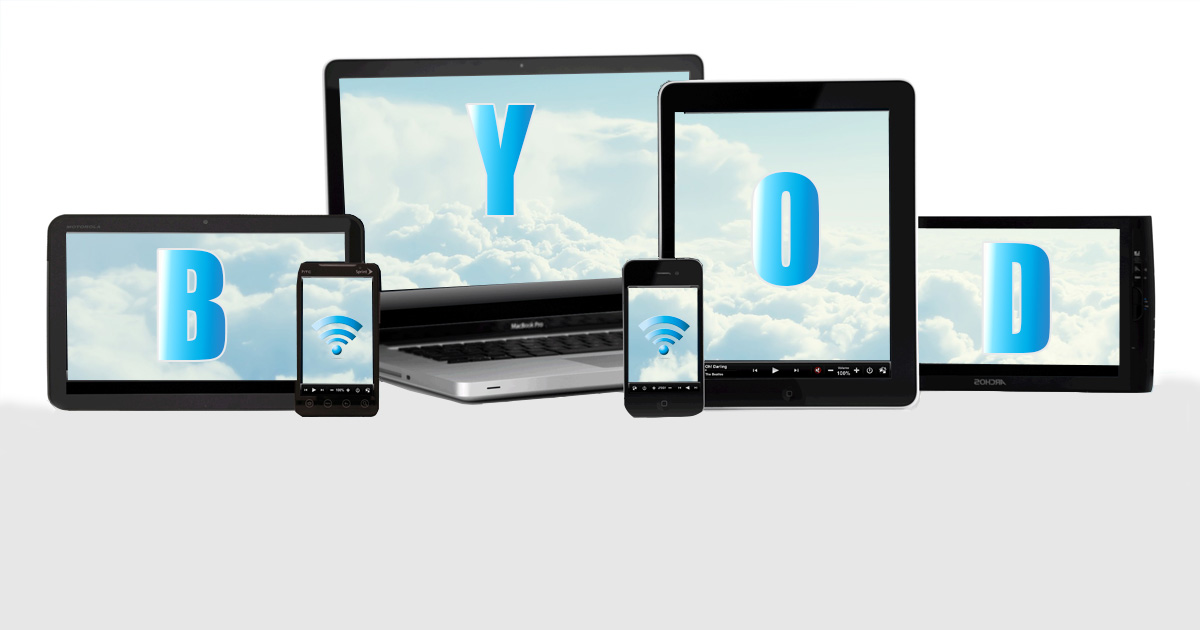The conference room is often the most-used and least-understood. It’s the one place where your staff and guests intersect with audio, video, screen-sharing, and presentation technology. The problem is, you might not have the right adapters to plug in your laptop. What if someone is using a different platform? What if they use a tablet, or have their presentation on their smart phone? BYOD has been the unattainable goal for years… until recently. BYOD in your conference room might be just what you need to get everyone collaborating, and all your devices working together.
What is BYOD?
You know the problem. You’ve got your conference room AV all set to go, and your guest, or distance presenter isn’t using the same types of devices you do, and no one has the right plugs to make it all work. You end up wasting time. The IT department can’t get there right away. Nobody really knows how to make all the stuff work together. What if you could just connect whatever anyone brought with them, and get it on the conference room screen? What if you could collaborate on documents and other files? What if you could switch from one person’s screen to another quickly and easily without the hassle of cables and plugs. BYOD (Bring Your Own Device) technology makes this possible, and it’s available for your conference room.
Adding BYOD Capability
Adding BYOD capability to an existing room, or a new space, might be a do-it-yourself project for some, but expert help takes away the guesswork. Typically, a BYOD device includes a small box that connects to your conference room display, or projector. Wi-Fi access lets you connect your laptop, tablet, or smart phone using built-in tools like Apple AirPlay, or a quickly installed app from the manufacturer. The BYOD box can provide the basics of connecting to a screen, along with options like note-taking, mark-up, and screen sharing. BYOD is more than just putting something on a screen. BYOD is all about collaboration. Some devices provide more collaborative options than others, including distance back-streaming, document collaboration, and document management. Still other devices can run standardized applications, utilize multiple devices, and display on multiple screens. The tasks of selecting the right system for your needs, connecting it to your network, and making it an integral part of your conference room carry a few cautions.
BYOD Cautions
- Not all devices do all things
- Some BYOD systems do not work with mobile devices
- You still need to be on the same Wi-Fi
- It’s advisable to set up a guest network
- It can be difficult to choose the right system for your particular needs
Expert Advice
Whether you’re just adding BYOD capability to an existing space, or tricking out a new conference room, board room, or multi-media distance presentation center, working with an independent AV designer helps make sure you get exactly what you need. ABD works with you to develop a plan and a budget. We design the infrastructure and specify the right equipment to make it all work together. We’re not in the business of selling or installing systems, so you know you’re getting recommendations that match how you work, and meet your budget. ABD Engineering & Design’s experts keep up-to-date on the latest technology, so you don’t have to.
